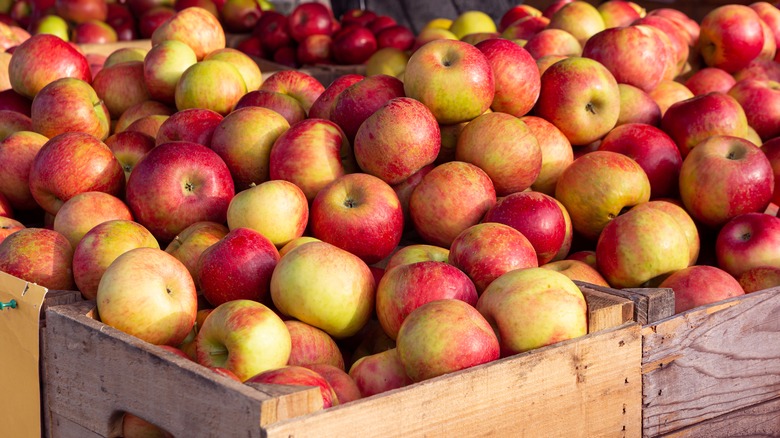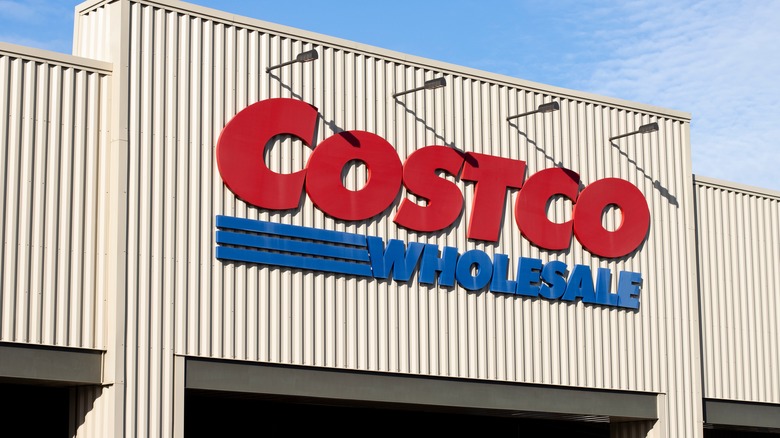Why Costco Shoppers Have Issues With Its Honeycrisp Apples
Costco is a great place to get all sorts of products, and that includes fresh produce. Sure, buying produce at Costco could mean you have to worry about consuming enough pears to feed an entire marching band for a fortnight before they go bad, but that's a tomorrow problem. Then again, maybe sometimes Costco is not necessarily the best place to get certain things. Don't get it twisted here; the prices are always going to be great — that's kind of Costco's thing, even outside of the legendary hot dog deal – but sometimes customers will find issues with specific products.
Such appears to be the case with the Honeycrisp apples. Some shoppers have reported myriad issues with Costco's Honeycrisp supply. According to these customers, the colors of the apples aren't right (they're totally red as opposed to a speckled red and yellow), the apples are too soft, and they're not as sweet as they're supposed to be. The issues are so prevalent that there's even a conspiracy theory going around that they're not actually Honeycrisp apples at all.
Is Costco actually just replacing Honeycrisp apples with Red Delicious and claiming they're the same thing? Almost certainly not. In fact, there are several more plausible reasons why Honeycrisps from Costco might not taste as good as those from other suppliers.
The apples are probably just subpar Honeycrisps
The most likely explanation is both mundane and eminently explicable: It could just have to do with Costco's supplier. See, Honeycrisp apples are a very recent cultivar that was only released to the public in 1992 after being designed at the University of Minnesota. Because of where they came from, Honeycrisps were designed to be grown in colder temperatures. However, thanks to their explosive popularity in recent years, farmers try to grow Honeycrisps in various climates for which they weren't designed. It's inevitable that this would affect their quality.
There's also concerns related to their color which can allegedly result in apples that aren't as ripe as they should be. By design, Honeycrisps start to get red when they're at peak ripeness. The problem is certain cultivators are theorized to have messed with Honeycrisp genetics to make them turn red faster — meaning they wouldn't actually be ripe any earlier, but would look like they were ready for store shelves, and thus increase the turnaround time on the crop itself. Through no fault of its own, if Costco sourced from a supplier doing this, the apples wouldn't be ideal.
So are the Honeycrisp apples at Costco not up to par? It's hard to say ... but some customers certainly aren't happy.

